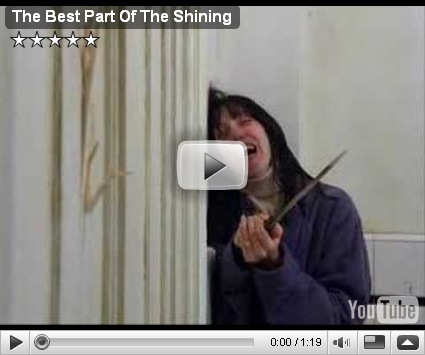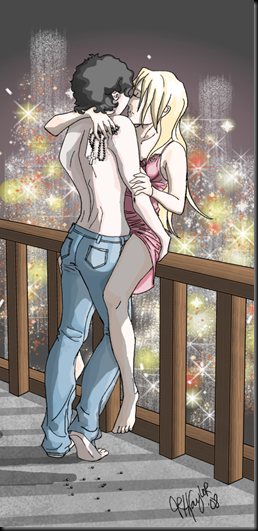 I have been of late reading the biography of Anne Sexton written by Diane Wood Middlebrook, a gift from another writer friend. I am a fan of Sexton’s poetry, and being a writer myself, obviously I am interested in the inner workings of successful poet. The biography is quite candid and brings up several questions in my mind and I have heard the same come up among other writer/poets. Is there a link to creativity and internal turmoil? In communications with others it may seem the case but everyone is different inside and different on what goes on outside.
I have been of late reading the biography of Anne Sexton written by Diane Wood Middlebrook, a gift from another writer friend. I am a fan of Sexton’s poetry, and being a writer myself, obviously I am interested in the inner workings of successful poet. The biography is quite candid and brings up several questions in my mind and I have heard the same come up among other writer/poets. Is there a link to creativity and internal turmoil? In communications with others it may seem the case but everyone is different inside and different on what goes on outside.
Anyway, where I am going with this is I came across this article and thought I would share it.
November 14, 1994
Exploring the Links Between Depression, Writers and Suicide
By WILLIAM GRIMES
When the poet Anne Sexton learned of Sylvia Plath's suicide in 1963, she was horrified. "That death was mine," she said. Eleven years later, wrapped in a fur coat that once belonged to her mother, she sat in her car with the engine running in a closed garage and ended her life.
Literary artists have always been drawn to death as a subject, but a disproportionate number of them have also courted it in their personal lives. In a daylong conference at the 92d Street Y on Friday, several scholars and writers explored the links between depression, creativity and suicide, primarily in the life and work of Sexton, Plath and Ernest Hemingway. The conference,
"Wanting to Die: Suicide and American Literature," was organized by the American Suicide Foundation.
The novelist William Styron recounted his own battle with depression, told in his book "Darkness Visible," and pointed to the warning signs of his illness in his novels. "I now realize that depression and thoughts of suicide have been an integral part of my creative personality throughout my life," he said.
Three of the main characters in his novels kill themselves, Mr. Styron said. Moreover, the depressive mental states that he described in detail from "Lie Down in Darkness" and "Sophie's Choice" uncannily anticipated his own illness.
In rereading his work, Mr. Styron said, "I began to realize all my work was of an incipient depressive personality struggling to prevent the demons of mood disorder from crowding in."
Mr. Styron joins a long and illustrious roster of literary figures who battled depression and despair. Kay Jamison, a professor of psychiatry at Johns Hopkins University and the author of "Touched With Fire: Manic-Depressive Illness and the Artistic Temperament," said writers were 10 to 20 times as likely as other people to suffer manic-depressive or depressive illnesses, which lead to suicide more often than any other mental disorders do.
It is not surprising that these mood disorders seem most at home in the artistic mind. "The cognitive style of manic-depression overlaps with the creative temperament," Ms. Jamison said. Researchers have found that in a mildly manic state, subjects think more quickly, fluidly and originally. In a depressed state, subjects are self-critical and obsessive, an ideal frame of mind for revision and editing. "When we think of creative writers," Ms. Jamison said, "we think of boldness, sensitivity, restlessness, discontent; this is the manic-depressive temperament."
The demons that pursued Mr. Styron gave Sexton her richest subject matter, and eventually consumed her. Diane Middlebrook, the author of a recent biography of Sexton, said that initially she resisted ending her biography with the suicide, for fear that it would dismantle the image of Sexton as a woman who found in the wreckage of her life the raw material from which she constructed poetry of unusual power and immediacy.
In the end, she acceded to Sexton's wishes and, so to speak, assisted in her suicide. "She neither could have nor should have been prevented from ending her life that day," Ms. Middlebrook said. "The best thing I could do as a biographer was honor her intention without flinching."
Herbert Hendin, a professor of psychiatry at New York Medical College and then executive director of the American Suicide Foundation, rejected the notion that Sexton's suicide was inevitable. "This is tempting to therapists and biographers," he said. "It softens the desperation of the act and provides solace for the reader."
Both Ms. Middlebrook and Sexton's analyst, Dr. Martin T. Orne, made the same mistake, he said, in not challenging a central premise governing Sexton's psychiatric treatment, namely that she had nothing to offer but her poetry.
Perhaps more than other artists, writers can be seduced by the attractiveness of suicide as a means of controlling their life story. Several speakers pointed out the tendency of suicide to become a powerful image or metaphor, one that takes root in the mind and flourishes. "Both Sylvia Plath and Sexton shared the notion that a great artist's life must end in death," Ms. Middlebrook said. "You stop before you write more bad stuff. Sexton applauded Hemingway's suicide. She said 'Good for him.' "
Hemingway, of course, was almost programmed for suicide. His father killed himself, and so did a brother and a sister. Evidence of his obsession with death and decay appears in his earliest juvenile writing and constitutes his grand theme in the mature work.
"He blamed his father for committing suicide, because he saw it as cowardice," said Scott Donaldson, the author of "By Force of Will," a biography of Hemingway. "It was not suicide as suicide that got to him, but the idea of a guy running away from a fight." In the end, Hemingway's resolve unraveled as his health failed and he became subject to paranoid delusions.
As a partial explanation of the nearly irresistible pull of suicidal tendencies, Robert Jay Lifton, a professor of psychiatry and psychology at the City University of New York, proposed something he called the suicide construct. The construct is an internalized image or idea of oneself as a suicide that often comes from a family member who has committed suicide. "There is also the quest for a future in suicide, the desire to make a statement in a way that the person could not in life," he said. Mr. Lifton described the novelist Yukio Mishima as having a suicide construct so strong that death for him became something like an erotic object.
Plath, like Hemingway, tried to confront her stalker. "She had to go after her dead father and look him in the eye," said A. Alvarez, a poet, critic and novelist and a friend of Plath. "For her, death was a violent struggle with a thug. She handled it with a certain relish and sardonic energy."
Mr. Alvarez argued that Plath's death was the "intolerable cost of a certain type of modernist art." Like Robert Lowell and John Berryman, she used her own sickness as subject matter. "This solitary enterprise, when you push it in a certain way, is a high-risk activity," he said. "The byproduct of her particular form of originality was that she ended up killing herself."
Whatever your take is on the subject, you must admit that many times the inspiration comes from the hurting we have inside. Many of us struggle and pour out that pain.
g~






























